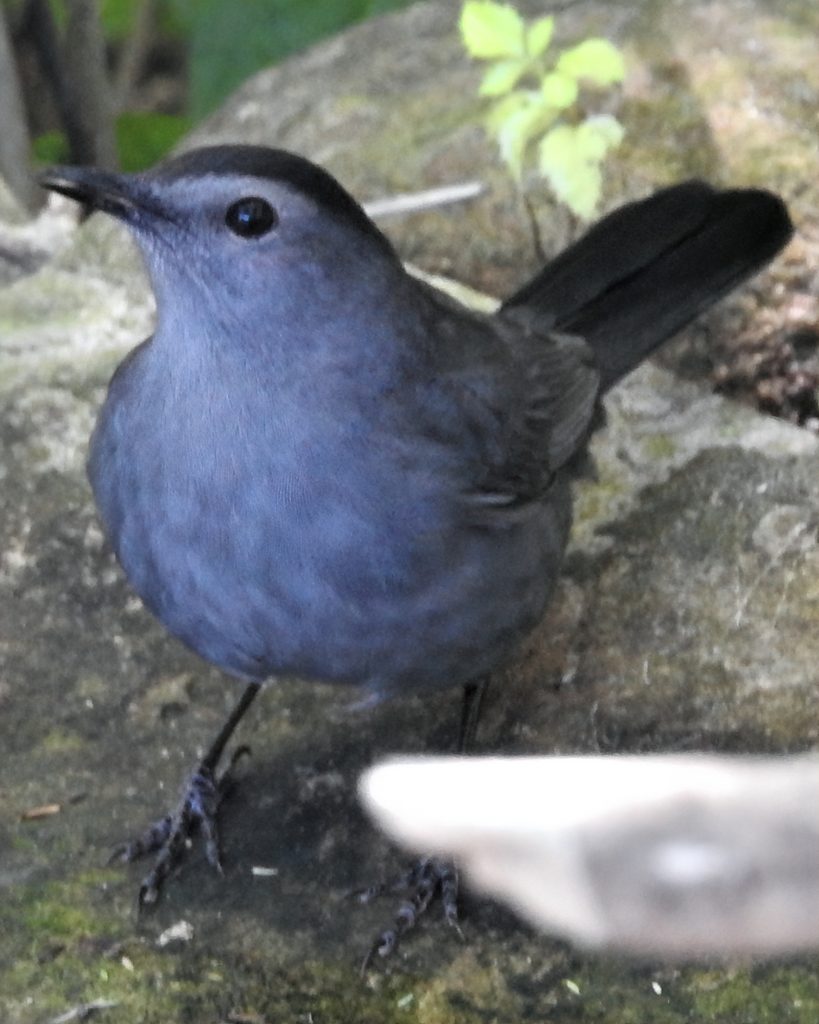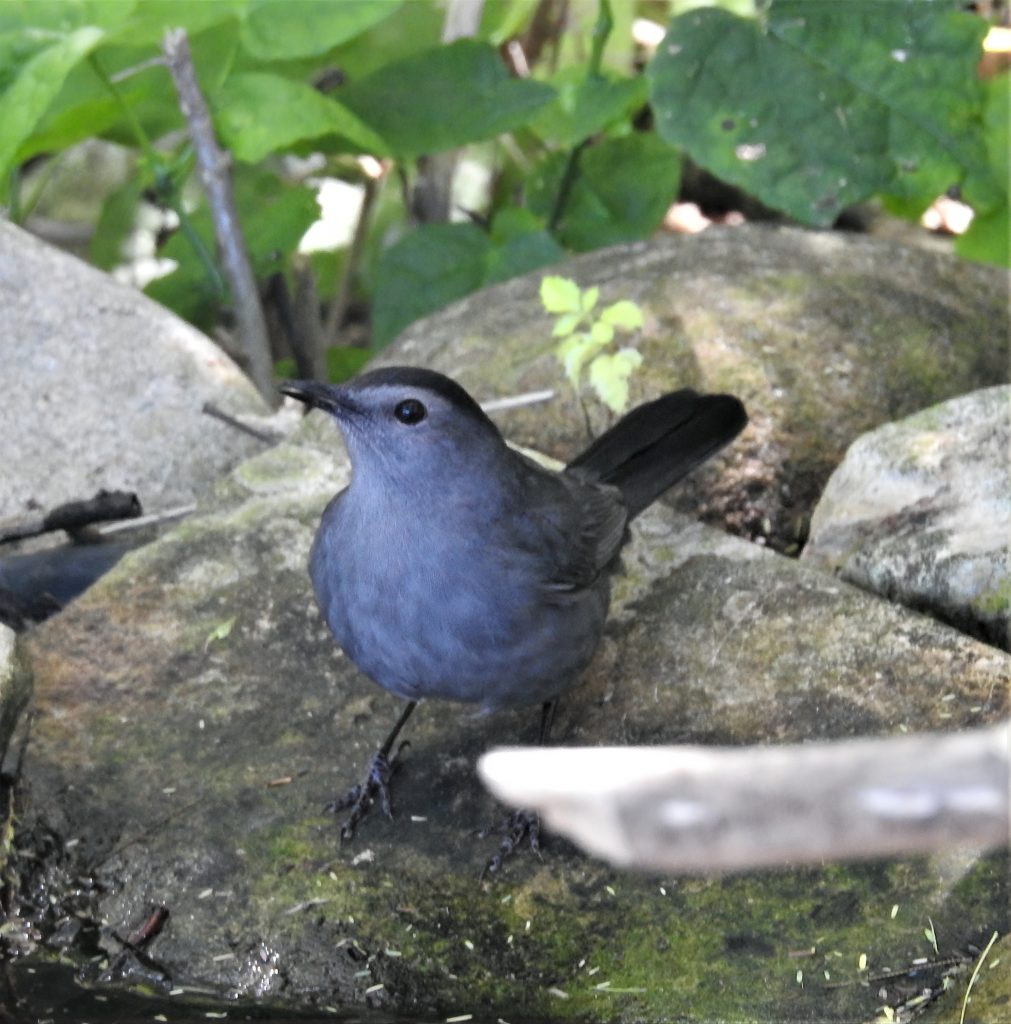A cry of “Mwee! Mwee!” sends an earnest cat-lover, shouting, “Here, kitty, kitty!” scrambling into bushes after a lost, forlorn kitten. But, no, it’s a Gray Catbird making its namesake call.

Besides mewing, the catbird—one of our occasional autumn and winter visitors— engages in an intricate array of songs, whistles, squeaks, gurgles, whines, chatter and sometimes mimicry, with elaborate tunes lasting as long as ten minutes. Both sides of its syrinx—a vocal cord at the base of its trachea—can operate independently, essentially letting it sing duets with itself. A Michigan bird produced 170 distinctive syllables in 4 ½ minutes. The Gray Catbird may imitate 44 species of birds, frogs and various machines.
Demonstrating the catbird’s imitative abilities, this video first presents the mimicked creature, then the catbird producing a similar sound:
Both males and females, virtually indistinguishable in appearance, sing and call, with males doing so more loudly. Sometimes they duet, and a male often sings a half hour before twilight or in the evening.
Though not as striking as, say, the Rose-breasted Grosbeak or Painted Redstart, the catbird cuts a dashing figure in its trim gray suit, smart black cap and reddish rump. The Gray Catbird breeds throughout much of the U.S., including far East Texas, but excluding much of the West and Southwest.
Javier Gonzalez, Naturalist Educator at South Padre Island Bird, Nature Center and Alligator Sanctuary, believes that wintering Gray Catbirds appreciate our coastlands, “where they can find lots of berries,” particularly liking, he says, those of Berlandier’s Fiddlewood shrubs, abundant both at the Sanctuary and at Laguna Atascosa. Gray Catbirds regularly appear on annual lists of Christmas bird counts along the coast.
Relishing both small fruit and invertebrates—especially ants, but also caterpillars, spiders, dragonflies and others—the Gray Catbird often forages on the ground, flipping dead leaves with its bill. Though it mainly gleans its prey, it may hover and catch flying insects or flush out and chase them. Like other birds, it fills up on more animal matter during breeding season.
Gray Catbirds (Dumetella carolinensis), share the family Mimidae— including singers who embellish ornate tunes with sounds of other creatures— with our year-round residents, Northern Mockingbirds, Curve-billed Thrashers and Long-billed Thrashers. The catbird’s genus name means “small thicket”, describing where it thrives and nests—though, within foliage, catbirds do enjoy having a prominent lookout. Spanish-speakers either call it Pajaro Gato Gris, meaning Gray Catbird, or Maullador Gris, which translates as “mewing gray one”.
Generally monogamous, the Gray Catbird, after securing turf within dense foliage and engaging in several courtship displays, commonly raises two broods. The male may bring supplies, but his mate creates the three-layered nest, weaving fine materials like hair, leaf skeletons and grass tightly into its interior. Sometimes a catbird will also build a dummy nest in an exposed area, presumably to fool snakes, blue jays, squirrels and other predators.
Throughout the summer, one can see hundreds of songbirds, including sparrows, buntings and warblers, tending to oversized fledgling Brown Cowbirds—the mothers of whom, foregoing nesting altogether, lay their eggs in the nests of other birds. The Gray Catbird, however, is one of the few birds able to detect cowbird eggs, which it ejects, pierces or buries deep in its plush nest. This recognition appears to be a learned trait, and the catbird seems to recognize the first egg in the nest as hers. In one study, when given a cowbird egg before she lay her own, the catbird ejected her own eggs rather than that of the intruder.
Gray Catbirds are thriving, perhaps even benefiting from humans’ planting of domestic shrubbery. However, they face declining breeding populations in the Southeast and upper Northeast. Also, the elimination of fencerow plantings around fields is problematic. Since catbirds fly low, they sometimes die in auto collisions. Also, catbirds, like other migrators, sometimes collide with towers and wind turbines—the effects of which we must try to mitigate during migration seasons. The oldest recorded age of a Gray Catbird was over 17 years.
